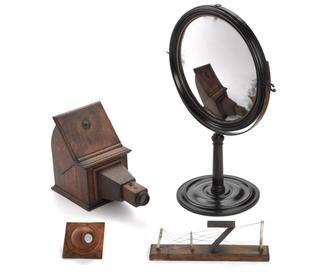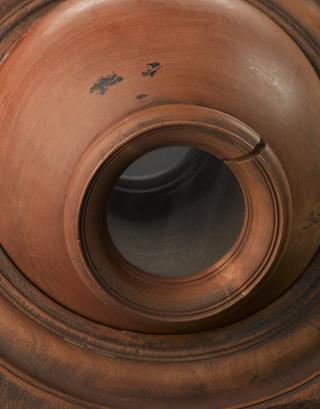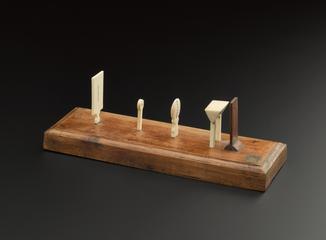
Model to demonstrate the path of a projectile
- Made:
- 1740-1753












Model used to demonstrate the path of a projectile made before 1753, maker and place of production unknown, but thought to have belonged to Stephen Demainbray. The model is accompanied by three balls, two made of ivory and one of brass.
The model to demonstrate the path of a projectile consists of a wooden, curved channel along which the accompanying balls are rolled. It was used to demonstrate motion. When the balls start rolling at the top of the channel and then fall freely, their subsequent paths follow a particular parabola. This can be demonstrated by a series of brass rings attached to the backboard and forming a parabolic curve, which the balls pass through. The model was itemised in the Queen's Catalogue and therefore believed to have belonged to Stephen Demainbray. Demainbray worked as superintendent at the King's observatory at Kew from 1768 and his collection of instruments and apparatus was absorbed into the King's own collection.
Details
- Category:
- King George III
- Object Number:
- 1927-1112
- Measurements:
-
overall: 380 mm x 670 mm x 210 mm,
- type:
- model - representation
- credit:
- King's College, London




